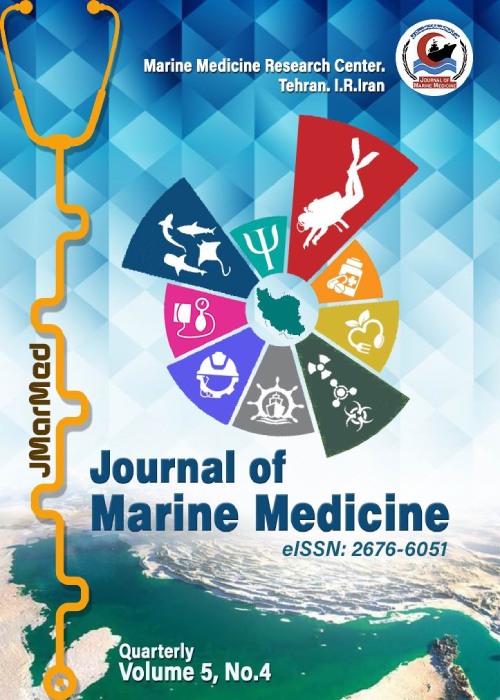Identification of Poisonous and Venomous Marine Animals in the Inter-Tidal Zone and Near-Coastal Waters of the Persian Gulf
One of the threats to the health of people who visit the tropical waters and ecosystems near the Persian Gulf is the presence of poisonous and venomous marine animals in these areas. The aim of this study was to identify the poisonous and venomous marine animals dangerous to the health of seafarers in the area between the inter-tidal zone and the coastal waters of the Persian Gulf.
In this study during 2018, mud and rocky sand habitats in the inter-tidal zone and shallow coastal waters (with a depth of less than one meter) around Qeshm Island, Persian Gulf, Iran have monitored to investigate the diversity of poisonous and venomous marine animals that can be dangerous to human health.
The phonetic information of two important groups of poisonous and venomous marine animals including ray fish and cone shells were presented. A total of three species of cone shells were reported in the area: Conus coronatus (65%), Conus frigidus (7%), and Conus pennaceus (28%). Simpson’s diversity index for these three species of cone shells was equal to SDI-1=0.49, which indicates the lack of high dominant of these populations in the region. All cone shells were collected from rocky-sandy beaches and their frequency was higher in the cold season than warm season. Although stings are present in many ray fishes, the species of the four families are responsible for most human bites. These four families are Dasyatidae, Gymnuridae, Myliobatidae and Rhinopteridae which were often observed in the warm season on the coast of Qeshm Island.
the inter-tidal zone and shallow coastal waters (less than one meter deep) in the Persian Gulf is a habitat for poisonous and venomous marine animals such as ray fish and cone shells that can bite humans and inject venom into the body and cause health problems. This potential danger can be partially alleviated by educating individuals and forces on how to deal with these poisonous and venomous marine animals.
- حق عضویت دریافتی صرف حمایت از نشریات عضو و نگهداری، تکمیل و توسعه مگیران میشود.
- پرداخت حق اشتراک و دانلود مقالات اجازه بازنشر آن در سایر رسانههای چاپی و دیجیتال را به کاربر نمیدهد.


